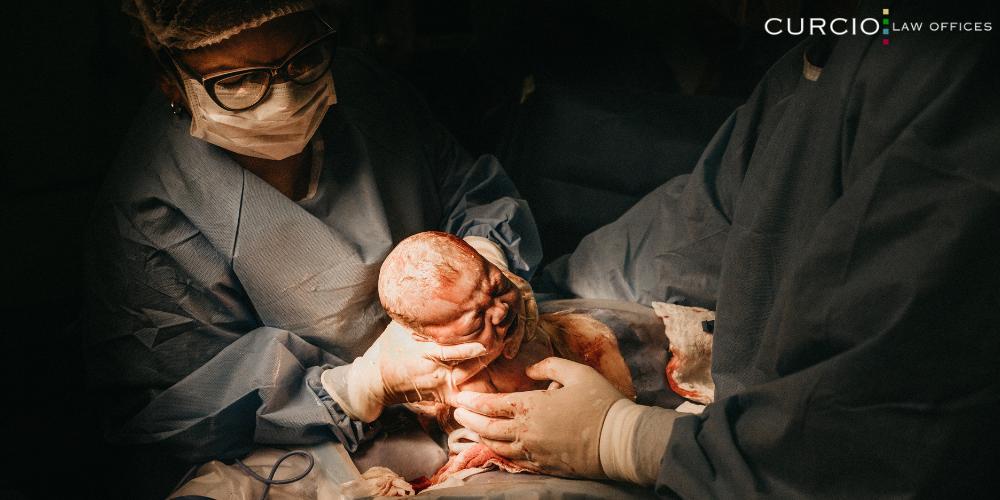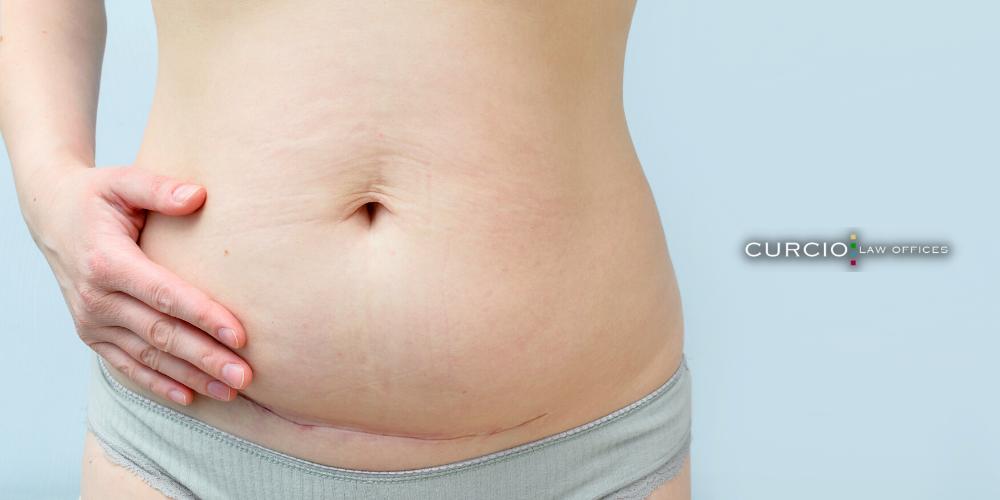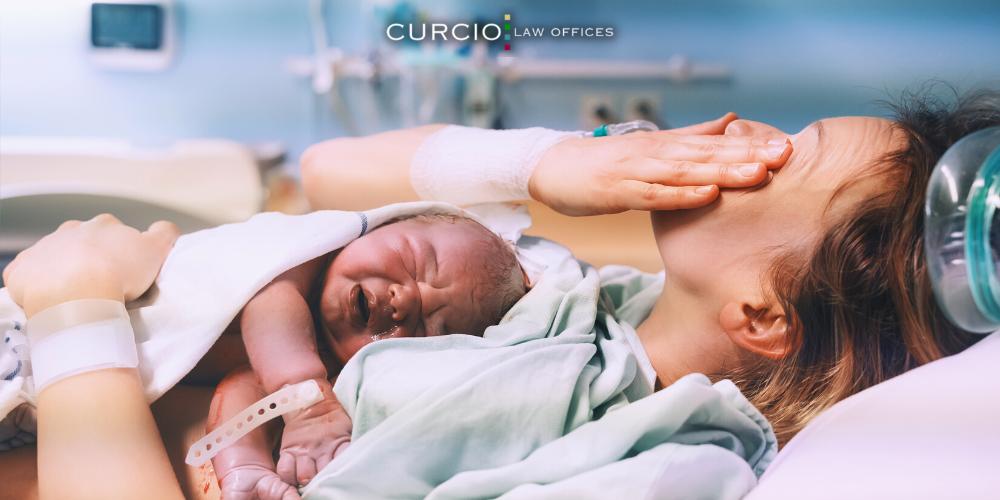Chicago VBAC Accident Lawyer
PRACTICE AREAS
VBAC Birth Injuries in Chicago, IL
A vaginal birth after cesarean (VBAC) is when a woman undergoes a vaginal delivery after a previous cesarean delivery. Technically, all forms of childbirth are dangerous in their own ways, but having a vaginal birth after cesarean delivery is more dangerous than people realize. During a cesarean birth, the mother’s abdomen and uterus are cut open in order to deliver her baby, and then sewn up again. Attempting a vaginal delivery later on can cause the scar tissue from the prior c-section to tear open, which typically results in stillbirth. The risks of uterine rupture during vaginal birth increase after every single repeat c-section. This type of birth can result in other complications too, such as non-fatal VBAC birth injuries to the baby.
It is up to the obstetricians to weigh the risks and benefits of VBAC for every single patient. If they fail to provide VBAC patients with informed consent or they recommend a high-risk patient for a VBAC, and the patient suffers catastrophic birth complications as a result, then the obstetricians can be held liable in a medical malpractice lawsuit.
Below, our Chicago birth injuries lawyer team breaks down everything you need to know about VBAC: what it is, risks, benefits, and whether or not you can take legal action against negligent medical professionals following a failed VBAC.
If you or your baby suffered major injuries or wrongful death as a result of medical negligence, it’s crucial to seek legal counsel. Birth injuries and stillbirths can result in lifelong emotional trauma, physical disabilities, and financial instability. A birth injury lawsuit can help you recover financial compensation for your suffering. Call 312-321-1111 to schedule a free consultation with a Chicago wrongful death lawyer or birth injury lawyer at Curcio & Casciato today.

What is VBAC?
VBAC stands for vaginal birth after cesarean section (c-section). In other words, VBAC means giving birth vaginally after a previous cesarean delivery. During a c-section, a doctor will make a long incision in the lower abdomen, and then another incision through the uterus. The baby is removed through these incisions, and then the mother is sewn up.
Is It Safe to Have a Vaginal Birth After a C-Section?
If you’re reading this and you don’t know much about birth, you may think that having a vaginal birth after cesarean section doesn’t sound like a big deal. What’s the concern?
The concern is that the pressure of uterine contractions during a vaginal birth can cause the uterus to rupture through the old cesarean scar. Uterine rupture occurs when the uterus tears open during labor and delivery or a major accident, such as a car accident, for example. Our Chicago VBAC accident lawyers provide more information here: can a car accident cause a miscarriage?
Uterine rupture is considered a rare but life-threatening complication for both mother and baby. According to a reviewed study, 98% of the babies whose mothers suffered a uterine rupture died during birth. This is called a stillbirth.
So, while uterine ruptures don’t happen to most women during labor and delivery, it’s still a very real risk with grave consequences, especially for those who have had a prior cesarean delivery. That’s why most doctors are very cautious about allowing patients to attempt VBAC births.
It is very possible and safe to have a successful vaginal delivery after a prior cesarean birth under the right circumstances. In fact, studies from the American Pregnancy Association state that 60% to 80% of women who have had prior cesarean deliveries go on to have successful vaginal births in future pregnancies. Additionally, the National Institute of Child Health and Human Development offers a similar statistic: about 75% of women who have previous cesarean deliveries end up having successful vaginal births.
What is Trial of Labor After Cesarean Delivery?
Trial of labor after cesarean delivery (TOLAC) basically means a VBAC attempt. If a pregnant woman’s doctors believe that she is a good candidate for a vaginal birth even after having a previous cesarean delivery, then they will support her choice of attempting to deliver the baby vaginally. If complications arise at any point during the attempted vaginal birth, and the doctor believes the mother or the baby’s life is at risk, then this is a valid reason for an emergency c-section or emergency cesarean delivery.
What is the Risk of Uterine Rupture After a Previous C-Section?
The American College of Obstetricians and Gynecologists (ACOG) states that uterine rupture rates for women with a transverse incision are about 0.9 in 100. In other words, the rate is slightly under 1 in 100. Still, some women have a higher risk of uterine rupture than others, which is why it’s up to doctors to decide which women should attempt VBAC birth and which ones shouldn’t.

Types of Incisions and Uterine Rupture Risk
Many doctors believe that certain types of c-section incisions carry an increased risk of uterine rupture during VBAC than others. Your specific type of uterine incision should be taken into account by your team of doctors while formulating the best and safest birth plan.
Here is a brief break down of types of uterine incisions and their potential risks in subsequent pregnancies:
- For starters, a low transverse incision generally presents the lowest risk of uterine rupture during vaginal birth after cesarean delivery. A low transverse incision is basically a horizontal cut made in the lowest, thinnest part of the uterus.
- Meanwhile, a low vertical incision generally presents a higher risk of uterine rupture compared to the aforementioned type of uterine incision. This type of incision is a vertical cut made in the lowest, thinnest part of the uterus.
- Finally, a high vertical incision is considered the most dangerous type of uterine incision for women who want future pregnancies. This incision is a vertical cut made higher up on the uterus, and can drastically raise the risks of uterine rupture in later births. Doctors will typically resort to this type of incision in order to deliver preterm babies.
It’s important to note that the incision that you see on your lower abdomen may not match the type of incision made on your uterus during birth. If you’re unsure what type of incision was made during your last cesarean delivery, ask your doctor or check the medical records from your c-section. It’s important that your medical team is aware of the specific type of incision in order to help you create the safest possible birth plan.
Our Chicago hospital negligence attorney team can help you understand how to sue a Chicago hospital for negligence in failing to plan for your birth.
Health Complications From Uterine Rupture
Previously, we mentioned that the most grave complication associated with uterine rupture during birth is fetal death. However, other complications can occur when a uterus ruptures, including:
- Hysterectomy
- Blood loss
- Blood clots
- Infection
- Bladder damage
Vaginal Birth Risks
Most women (and obstetricians) prefer a vaginal delivery over a cesarean delivery because the recovery period is shorter and there are fewer complications. However, vaginal deliveries still come with their own set of risks, including:
- Perineal tears, which are tears in the vagina and surrounding tissues during birth;
- Perinatal asphyxia, which is when the baby doesn’t receive enough oxygen during labor and delivery;
- Umbilical cord prolapse, which is when the umbilical cord becomes compressed;
- Labor that doesn’t progress after uterine contractions have begun;
- Shoulder dystocia, which is when the baby’s shoulders get stuck inside the birth canal;
- Excessive bleeding from the placenta.
Women who undergo labor induction from cervical ripening or the medication called Cytotec can potentially experience more complications during the labor and delivery process. Contact our Chicago Cytotec injury lawyers to learn more.
Cesarean Delivery Risks
C-sections result in much longer postpartum recovery periods. Additionally, c-sections generally have more risks than vaginal births, including:
- Negative reactions to epidural analgesia and other types of anesthesia;
- Excessive blood loss after surgery;
- A more difficult and/or painful postpartum period;
- Injuries to nearby organs, such as the bladder and bowels, due to surgical errors;
- Blood clots in the pelvis or legs;
- Prolonged pain and swelling around the incision site;
- Incision infection;
- Higher risks of uterine rupture, hysterectomy, and other complications after each repeat cesarean section;
- Increased risk of abnormal placental attachment in future pregnancies due to prior cesarean scar tissue.
If you were injured due to a surgery mistake, contact our Chicago surgical error lawyers for a free consultation.
Successful VBAC Benefits
If you are able to have a successful vaginal delivery after a prior cesarean delivery, you and your baby will experience numerous benefits, including:
- Faster recovery during the postpartum period;
- Less pain during the postpartum period;
- Less bleeding;
- Babies often experience an immune system boost by passing through the birth canal which contains lots of good bacteria;
- Avoiding potential complications associated with c-sections, such as blood clots and injury to surrounding organs;
- A vaginal birth can assist in clearing the baby’s lungs as they pass through the birth canal. This will help them breathe better right after birth.

VBAC and Medical Malpractice
While most obstetricians genuinely care about their work and their patients, and therefore adhere to the medical standard of care, there are still plenty of obstetricians out there who act negligently during the birthing process. VBAC deliveries are very dangerous for both mother and baby, and it can take just one act of negligence to result in something as grave as a uterine rupture.
Below, our Chicago birth injury lawyers break down how medical negligence can mean the difference between life and death for women who attempt a vaginal birth after cesarean delivery – as well as their babies.
Who is a Good Candidate for VBAC?
It is normal for expecting mothers to create their own perfect birth plan, and to do whatever they can to make this birth plan happen. But ultimately, it comes down to whether or not their obstetrician thinks it is safe for them to have a vaginal birth, especially if they’ve had multiple cesarean deliveries in the past.
Good obstetricians should only allow low risk mothers to have a trial of labor after cesarean delivery. The following risk factors may make an expecting mother a poor candidate for VBAC:
- The mother has had more than two prior c-sections with low transverse uterine scars.
- Less than two years have passed since the mother’s last cesarean section.
- The mother has had a uterine rupture in a previous pregnancy.
- Fetal weight is more than 8lbs 13oz (macrosomia).
- The mother has uterine abnormalities or scars that aren’t associated with her prior c section.
- The mother has certain health conditions, such as gestational diabetes, genital herpes, or placenta previa.
On the other hand, factors that may increase the success of a VBAC is having a previous vaginal delivery, being younger than age 35, having a low transverse uterine incision, having a baby in the proper position (i.e. not in breech position), having a single baby (not multiples), and having generally good health during pregnancy.
It’s important to note here that even if an expecting mother is considered low risk for VBAC, the VBAC failure rate is high. A failed VBAC occurs at least 25% of the time, usually meaning that the mother has to have an emergency c-section.
It is the obstetrician’s job to weigh the risks vs. benefits of a VBAC for every patient. If they allow a patient to attempt a VBAC even though they’re incredibly high risk, and the patient suffers major complications as a result, then the doctor committed medical negligence.
VBAC Informed Consent
Informed consent is the process of doctors and patients making crucial medical decisions together. This requires the doctor to be completely transparent about all risks, benefits, and alternatives associated with a medical procedure. Informed consent is an ethical and legal obligation that doctors must adhere to in order to promote the health and safety of their patients.
The elements of proper informed consent include:
- The nature of the medical procedure,
- The risks and benefits of the medical procedure,
- Reasonable alternatives to a medical procedure,
- The risks and benefits associated with the alternative medical procedure,
- Assessing a patient’s understanding of the four aforementioned elements of informed consent.
So, in the context of VBAC deliveries, obstetricians are ethically and legally obligated to inform their patients of:
- The nature of VBAC delivery,
- The risks and benefits of VBAC delivery,
- Reasonable alternatives to VBAC,
- And risks and benefits of VBAC alternatives.
Finally, obstetricians must ensure that their patients are fully understanding everything that has been explained to them.
Failure to give informed consent to expecting mothers regarding the benefits and potential dangers of VBAC is a form of medical negligence. If the mother attempts a vaginal birth after cesarean delivery without fully understanding the ultimate consequence of uterine rupture, and the mother ends up suffering a uterine rupture that results in a stillbirth, then she has grounds to file a medical malpractice lawsuit against her obstetrician.
Can VBAC Result in Birth Injuries?
Yes, VBAC complications can have both maternal and fetal consequences. Even if uterine rupture does not occur, the baby could still suffer a wide variety of birth injuries, such as cerebral palsy and hypoxic-ischemic encephalopathy (HIE).
For example, let’s say an obstetrician fails to notice fetal distress due to umbilical cord prolapse during an attempted vaginal birth. By the time the obstetrician does notice the baby is in distress, the baby has suffered several minutes of blood and oxygen deprivation. The obstetrician orders an emergency c section and the baby comes out alive, but with major brain damage which will impact their development for the rest of their lives. Had the obstetrician paid close attention to fetal heart rate monitoring, the baby could have been born without a brain injury.
Birth Injury Damages
Chicago birth injury attorneys at Curcio & Casciato can help mothers recover financial compensation for the following types of damages:
- Past and future medical expenses for both mother and baby
- Past and future physical therapy expenses for the baby
- Expenses associated with necessary medical equipment such as wheelchairs, leg braces, and other assistive devices
- Full-time caregiver expenses if the baby suffers a lifelong disability
- Lost wages on behalf of the parents
- Loss of earning capacity if the child is disabled and therefore cannot work in the future
- Permanent scarring, disfigurement, and/or disability of the child
- Physical pain and suffering for both mother and baby
- Emotional distress
- Mental health counseling expenses
- Loss of enjoyment of life
- Funeral and burial expenses if the failed VBAC results in the death of the mother or the baby

Chicago VBAC Injury Attorney
If both you and your baby have suffered from major VBAC complications due to medical malpractice, you may have grounds to file a civil lawsuit. Chicago birth injury attorneys at Curcio & Casciato have decades of combined experience in litigating birth injury claims. Our legal team can provide compassionate legal counsel during this impossible time. Not only that, but we can help parents and families recover fair financial compensation for their suffering as well. Call 312-321-1111 to schedule a free consultation at Curcio & Casciato today.


